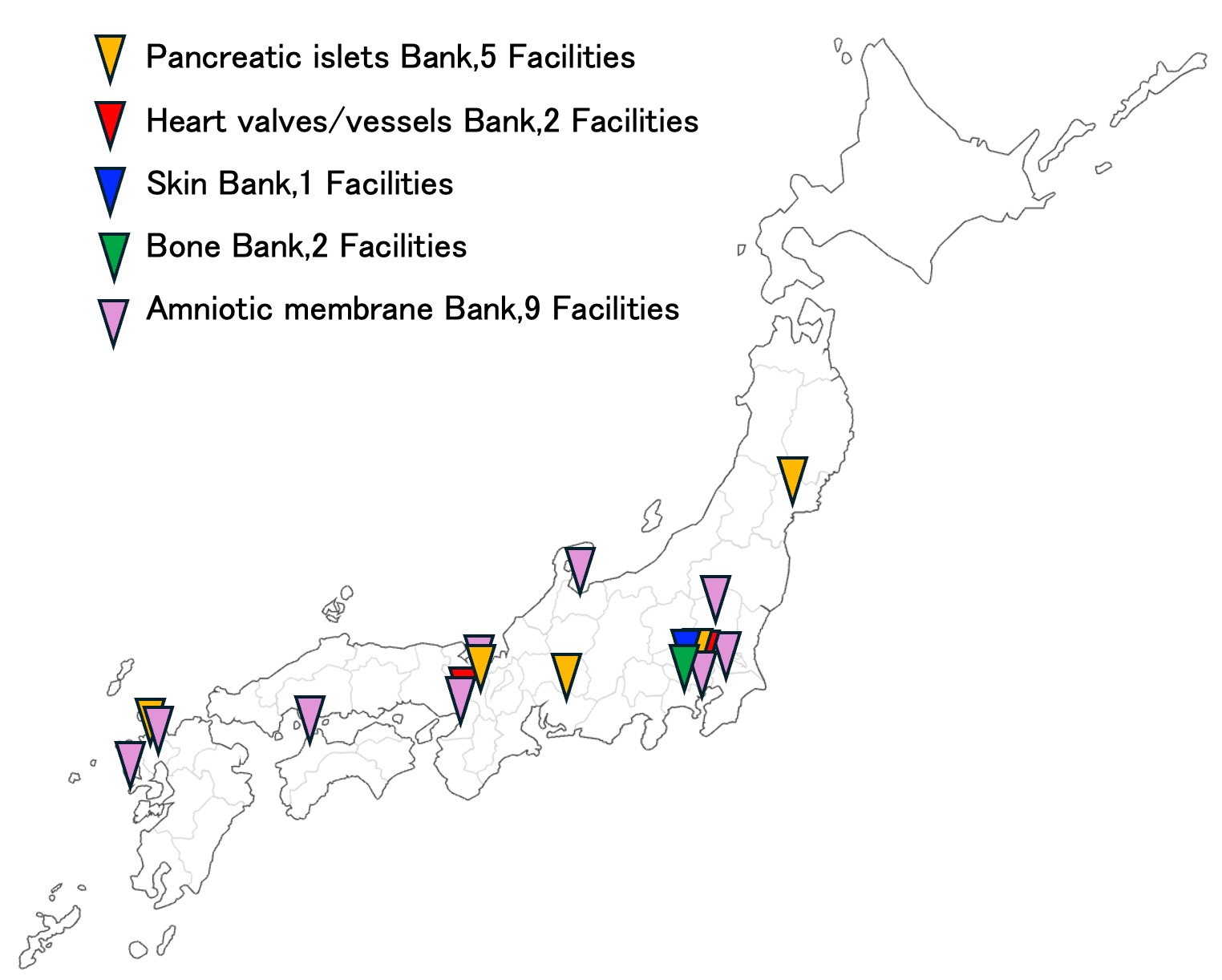Current status of tissue donor and recipient registries in Japan, 2024: A report from the Japan Society for Tissue Transplantation (JSTT)
Yuji Sampei1,3, Sumihito Tamura2,3, Ken Urabe1,4.
1Registry Committee, Japan Society for Tissue Transplantation, Minato-ku, Japan; 2Japan Society for Tissue Transplantation, Minato-ku, Japan; 3University of Tokyo Tissue Bank, The University of Tokyo Hospital, Minato-ku, Japan; 4Department of Orthopaedic Surgery, Kitasato University Medical Center, Kitamoto, Japan
Japan Society for Tissue Transplantation Registry Committee.
Background: The Japan Society for Tissue Transplantation (JSTT) certifies tissue banks involved in tissue transplantation to ensure high-quality banking operations, advance tissue transplantation, and improve tissue transplantation medicine. Currently, 18 facilities in Japan are certified and actively engaged in these operations. This report presents data collected by the JSTT Registry Committee on the status of donors and recipients for various tissues (pancreatic islets, heart valves/vessels, skin, bone/ligament, and amniotic membrane) during 2024.

Methods: We compiled data on the number of donors and recipients for pancreatic islets, heart valves/vessels, skin, bone/ligament, and amniotic membrane collected by the JSTT between January 1 and December 31, 2024. For recipients of each tissue, we analyzed detailed data including age group, gender, and primary disease/surgical procedure. For donors, we tabulated data on the number of tissues provided, type of donation (brain-dead/post-cardiac arrest), presence of organ donation, age group, gender, information source, and trigger for donation.
Results: During the 2024 reporting period, the total number of deceased donors was 29. This included 6 for pancreatic islets, 16 for heart valves/vessels, 7 for skin, and 0 for bone (from deceased donors). For living donors, there were 31 amniotic membrane donors and 39 bone donors.
Regarding recipient numbers, there were 6 for pancreatic islets, 24 for heart valves/vessels, 12 for skin, 39 for bone/ligament, and 601 for amniotic membrane.
Regarding donation cases, there were 15 brain-dead donations and 14 post-cardiac arrest donations. Prefecture coordinators were the information source in 12 cases, and "presentation of options" was the most frequent trigger for donation (19 cases).
Discussion: The 2024 data indicate that amniotic membrane transplantation has a significantly higher number of cases compared to other tissue transplants. This is likely due to amniotic membranes being provided by living donors, leading to a different supply system than other tissues relying on deceased donors. The fact that living donors are the primary source for bone and ligament transplants, with 0 deceased donors, highlights a future challenge to increase supply. The age, gender, and disease trends among recipients for each tissue reflect the specific characteristics of the diseases targeted by each tissue transplant. Data on donor information pathways and donation triggers will contribute to planning future awareness campaigns and information provision strategies for donor recruitment.
Conclusion: Tissue transplantation in Japan in 2024 showed varying trends across different tissues. While the high number of amniotic membrane transplants was notable, challenges remain in the supply of tissues derived from deceased donors, such as bone and ligament. We hope this report contributes to the future promotion of tissue transplantation and the establishment of a more effective medical care system.
[1] Tissue transplantation
[2] Tissue Donors
[3] Tissue recipients
[4] Japan